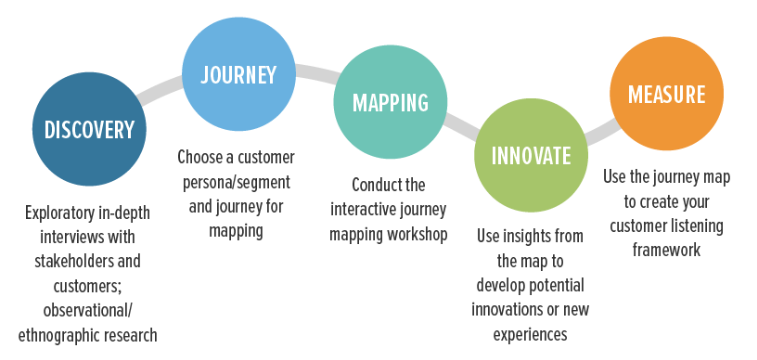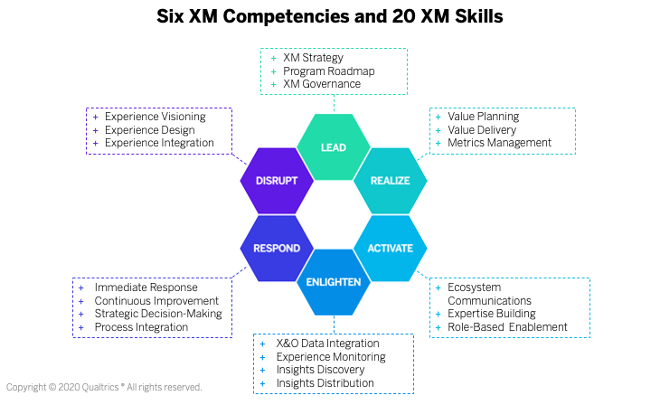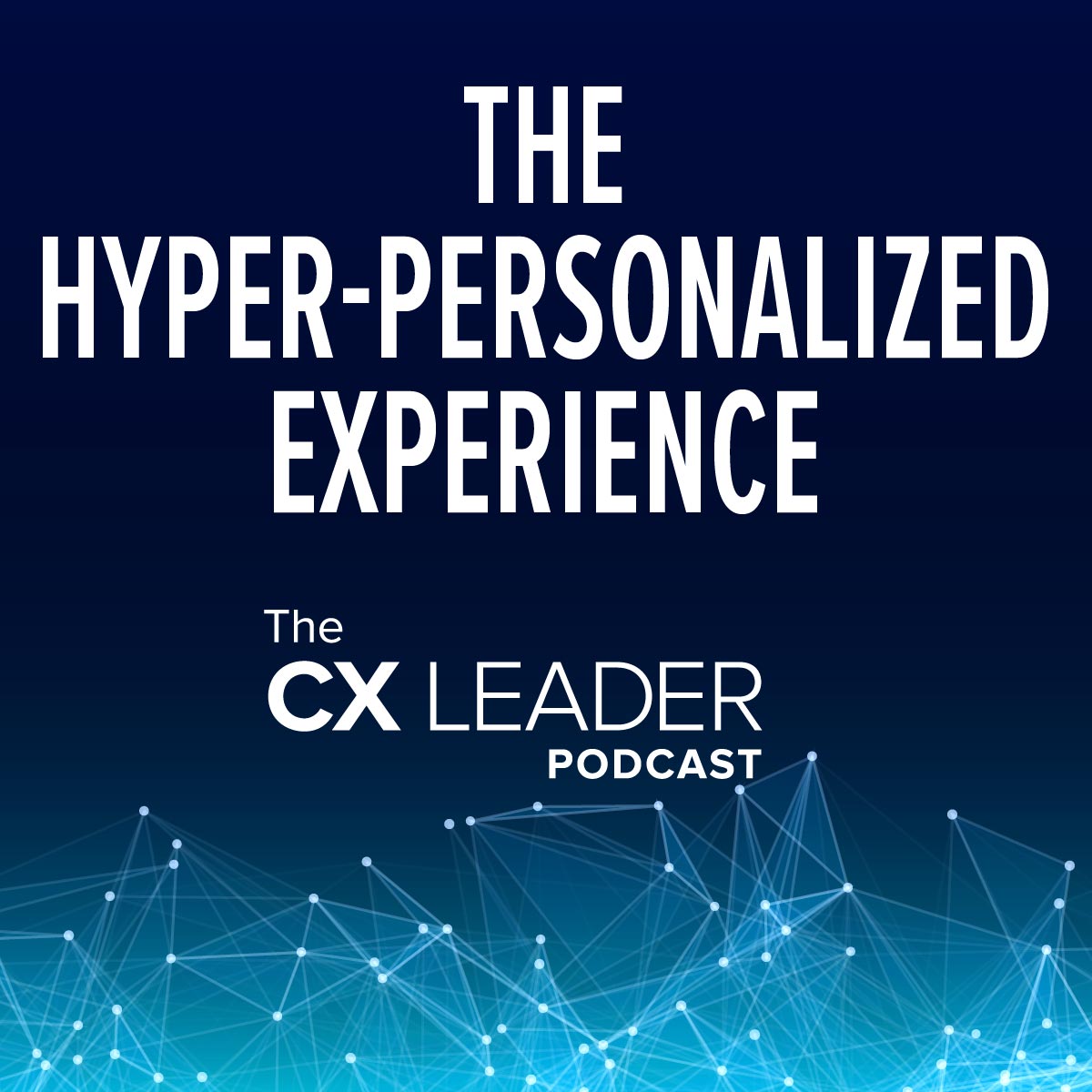
Customer experience (CX) comprises every interaction a consumer has with a business, from product discovery to post-purchase support. Everything a company does influences how the customer perceives the brand, if they feel satisfied, and whether they keep coming back. Building a strong CX program across an organization contributes to better brand loyalty, more repeat business, greater share of wallet, and positive word-of-mouth marketing.
So, CX is not just good for customers; it is good for business.
This article explores the fundamentals of CX, how to deliver a good customer experience, and tactics for pursuing continuous improvement.
Table of Contents
- Understanding the Customer Experience (CX)
- The Importance of CX in Business
- Factors That Impact the Customer Experience
- The Connection Between CX and Customer Loyalty
- Essentials for Delivering a Positive Customer Experience
- Customer Expectations and Preferences
- Personalization and Customization
- Improving the Customer Journey
- Measuring the Effectiveness of Customer Experience
- Key CX Metrics
- Evaluating Customer Feedback
- Benchmarking and Continuous Improvement
- Strategies for Enhancing the Customer Experience
- Implementing a Customer-Centric Culture
- Leveraging Technology for Better CX
- Investing in Employee Training and Development
- Improve Your Customer Experience with Walker
- Customer Experience FAQs
Understanding the Customer Experience (CX)
Customer experience is the impression a person has of a company or brand based on their collective interactions with the entity. CX includes every touch point along the customer journey, from browsing a website to making a purchase and accessing customer service for help.
Research shows that customer experience is now equal to price and product as a key brand differentiator. According to Qualtrics, brands risk losing nearly 10% of their revenue through poor customer experience management.
With the rise of online reviews and social media, customers have a global megaphone to communicate about brands. The quality of the customer experience determines if what gets shared is negative or positive.
Research from the Qualtrics XM Institute indicates that 77% of customers would recommend a brand to a friend after having a single positive experience. Conversely, it takes up to 12 positive customer experiences to make up for a bad one. Unfortunately, more than 60% of people are all too willing to share those negative experiences online.
Business leaders Andre Schwager and Chris Meyer describe CX as a total of the good, bad, and ugly across the customer journey in “Understanding Customer Experience” from Harvard Business Review.
Customer satisfaction is the culmination of a series of customer experiences or the net result of the good ones minus the bad ones. It occurs when the gap between customers’ expectations and their subsequent experiences has been closed.
Sounds simple. But achieving good CX is a complex endeavor. Every customer is different and so are their buying journeys. Organizations fully dedicated to elevating their CX program invest in understanding all customer needs, preferences, and pain points to provide a personalized and impressive experience for everyone.
The Importance of CX in Business
Successful customer experience management can have a major impact on a company. McKinsey research reveals improving the customer experience increases sales up to 7%, improves profitability by 2%, and expands shareholder returns by as much as 10%.
How customers feel about a brand directly impacts how much they are willing to spend with a company—and if they will bring their friends and family along. Benefits of improving the customer experience include:
- Driving new revenue and increasing customer lifetime value
- Increasing a brand’s worth
- Boosting brand loyalty and advocacy
- Staying aligned with customer needs and changing behaviors
- Reducing costs while promoting innovation
CX represents one of the biggest drivers of business growth. PwC reports that good customer experience influences purchasing decisions for 73% of people and generates a 16% price premium. Yet, consumers say less than 50% of companies provide an experience that meets expectations. Companies able to bridge this gap have a leg up on the competition and a strategic advantage toward the bottom line.
Factors That Impact the Customer Experience
Every touch point along the customer journey affects the customer experience. While factors may differ across industries, common elements include:
- Website Design: A company’s website often is a customer’s first touch point with a brand. A well-designed website includes an attractive design, simple navigation, easy-to-find product/service information, and clear contact details.
- Customer Service: A friendly, helpful customer service process can transform a bad customer experience into a positive one. Good customer support includes omnichannel access, self-service options, knowledgeable assistance, and timely responsiveness.
- Speed: Customers expect quick, efficient service, whether it is on the website or in person. Slow load times and long waits can result in a bad customer experience.
- Personalization: Customers want to be valued as individuals, not numbers. Personalized experiences, such as tailored product recommendations or customized messages, create a sense of connection and loyalty. A survey from Epsilon found that 80% of respondents are more likely to do business with companies offering personalized experiences.
The Connection Between CX and Customer Loyalty
A good customer experience strategy creates loyal consumers. Effective experience management nurtures strong relationships between customers and brands, lowering the churn rate and increasing repeat purchases. Customer loyalty also contributes to word-of-mouth marketing, estimated to influence $6 trillion in annual consumer spending according to Qualtrics.
While every touch point along the customer journey impacts loyalty, three key factors play an oversized role:
- Consistency: Customers want to work with brands they trust. Knowing what to expect from a company and having confidence that the brand experience will be the same every time supports that. Consistency in messaging, tone, product quality, and level of service builds trust and loyalty.
- Emotional Connection: Humans crave connection, so even brand relationships matter. Delivering personalized experiences, conveying empathy and understanding, and communicating a brand’s values strengthen customer loyalty.
- Listening: Customers constantly share feedback through surveys, call center conversations, and social media. Companies that listen to what customers have to say—and communicate that they are acting on the feedback—show the input is valued. When customers feel cared for, they stick around.
Boosting customer loyalty is not about always delivering “wow” moments. Companies can achieve devoted customers by being reliable and showing people they matter.
Essentials for Delivering a Positive Customer Experience
Delivering great customer experience is essential for building a loyal customer base and driving a company’s financial performance. Research published by Deloitte shows customers who enjoy positive experiences versus negative ones spend 140% more and remain buyers five years longer. Delivering a positive customer experience also can help businesses reduce cost to serve by up to 33%.
Organizations prioritizing the quality of their customer experience focus on these essential strategies:
- Effective Communication: Good communication is the foundation of any strong relationship. Use all available customer channels—like email, phone, live chat, and social media—to respond to customers promptly and efficiently. The messaging’s tone should be friendly, respectful, and empathetic.
- Excellent Customer Service: Good service goes a long way in building customer loyalty. Train all employees, especially the customer support team, to be polite and patient. Arm them with knowledge to effectively solve client issues. Ensure teams understand the brand and can represent it clearly and consistently.
- Technology Utilization: When used properly, technology improves speed and information to better serve customers. Technology advances like chatbots, task automations, social media monitoring, and self-service portals empower employees and customers. A customer experience management tool like that offered from Qualtrics captures valuable data to personalize interactions and generate valuable customer insights.
- Feedback: Delivering consistently on the brand experience customers value requires continuously collecting feedback. A transaction survey, social media posts, and third-party review sites all provide helpful information on where a company needs to improve and what takes priority.
Customer Expectations and Preferences
Customers enter every company or brand interaction with expectations and preferences. How well an organization understands and meets those expectations defines the customer experience.
Here are five simple ways companies can deliver on what consumers want when it comes to a good experience:
- Know the Customer: Start by understanding customer demographics, desires, and behavior patterns. Detailed information about customers and segments helps organizations tailor interactions and messaging to meet unique needs.
- Be Available: “Banker’s hours” in business are gone. Customers want access on their schedule. Take an omnichannel approach that allows customers to gather information, shop, and connect with support on their preferred platform and time.
- Provide Convenience: Customers want things easy, especially in the age of digital channels. Offer multiple payment options, a simple checkout, and quick product/service delivery. For ecommerce sites, provide product reviews, order updates, and delivery tracking information for added convenience.
- Offer Personalized Recommendations: Customers appreciate recommendations right for them. Use customer data and potential patterns to feed up shopping suggestions, consultative customer service, knowledge articles, and promotional offers.
- Build Trust: Always follow through with commitments. Eliminate guesswork and unpredictability for customers. Offer transparent pricing, clear policies, and honest communication. Deliver on brand promises and reward loyalty.
Personalization and Customization
Personalization and customization help companies provide relevant services or advice to strengthen relationships and reduce churn. The impact of getting it right is huge: improved operational performance, higher customer satisfaction, increased marketing and sales efficiency, and expanded wallet share.
McKinsey research shows companies that grow faster drive 40% more revenue from personalization than their slower-growing counterparts.
Use these five tactics to improve the customer experience by “getting personal”:
- Build Customer Profiles: Developing comprehensive profiles allows companies to personalize every customer touchpoint. Capturing details on each interaction, how the consumer felt about it, and potential patterns of behavior arms teams with the insights to offer customers experiences with real impact.
- Offer Recommendations: Develop recommendations specific to individual needs through customer data. Personalized suggestions are strongly correlated to a more enjoyable shopping experience and increased average order amounts.
- Personalize Communication: Analyze data to individualize communications. This can include greeting customers by name and sending messages tailored to specific needs and interests.
- Customize Products and Services: Offer customization options that allow customers to tailor products or services to their specific needs. Consider different colors, designs, functionalities, and add-on components.
- Use Behavioral Data: Behavioral data helps businesses understand what customers need and to predict their actions. A shopper buying skis may appreciate recommendations for jackets, a post-purchase email with details for an online skier forum, and access to ski resort travel deals.
Improving the Customer Journey
Experience management requires aligning the effect of each customer journey touch point with the individual’s expectations. Creating that alignment requires consistent work and refinement using the following strategies:
- Customer Journey Map: Customer journey mapping captures every interaction and touch point from A to Z. The process helps staff, especially each customer-facing group, identify opportunities for improvement and ways to optimize the experience.
- Seamless Interactions: Customers desire frictionless and flawless touch points across all channels. Providing customers with multiple options for solving problems or finding information without compromising quality and consistency maximizes the overall experience.
- Experience Issues Tracking: Companies must know what is going wrong to make it right. Tracking experience issues helps teams identify problem areas, how pervasive they are, and what the priority is for fixing them. Share experience issues with teams for training and include them on dashboards to enhance buy-in and accountability.
- Problem Resolution: Customers have little patience for problems, so when they occur, the expectation is that the company fix them ASAP. Offer a prompt, effective solution, apologize when necessary, and provide ways to prevent future issues.
- Staff Training: The quality of the employee experience is strongly correlated to how customers feel about their brand experience. Empower employees as true brand representatives. Train each customer-facing group on effective service techniques, how to communicate effectively, and best practices in CX.

Measuring the Effectiveness of Customer Experience
Understanding how customers perceive products and services requires measuring customer experience. Tracking CX metrics helps companies identify improvement areas, quantify the impact of changes, and track progress over time.
What gets measured, gets managed. When companies actively measure customer experience, they put value around it as a key indicator of business success.
Effective CX measurement requires establishing key customer experience metrics and gathering customer feedback. The process also involves benchmarking performance against competitors and developing a continuous improvement process for long-term CX progress.
Key CX Metrics
More than 15 different CX metrics exist. Their uses vary based on business activity and industry. Three of the most widely used CX measurements applicable to all organizations are:
- Net Promoter Score (NPS): Measures customer satisfaction and loyalty by asking customers how likely they are to recommend a company’s products or services to others. About two-thirds of the world’s biggest brands use net promoter as their primary CX metric.
- Customer Effort Score (CES): Helps companies identify areas of friction in the customer journey and improve the overall experience by measuring how easy it is for customers to interact with its products or services.
- Customer Satisfaction Score (CSAT): Asks customers to rate their experience on a scale from 1-5 to measure how satisfied they are with a company’s products or services.
Evaluating Customer Feedback
Feedback plays a critical role in measuring CX. Several ways of collecting feedback exist, including customer satisfaction surveys, social media monitoring, focus groups, and customer reviews.
Examining feedback helps companies identify root causes of customer complaints, offers insight into customer preferences, and provides ideas for new products and services based on customer needs.
Effectively analyzing feedback demands a deep understanding of the customer journey. Recognizing the problems that surface and how to fix them requires CX leaders and key decision-makers grasp each customer touchpoint and how they influence the customer’s experience.
Benchmarking and Continuous Improvement
Benchmarking is the process of comparing a company’s performance against industry best practices and competitors. The exercise helps companies identify where they are lagging and develop strategies to catch up. Benchmarking also pinpoints areas of strength that can be leveraged as a competitive advantage.
Continuous improvement revisits practices and procedures regularly to identify areas of improvement. The iterative process involves listening to feedback, analyzing performance metrics, and developing new ways of enhancing the customer experience.
Effective benchmarking and continuous improvement require a commitment to ongoing evaluation and CX optimization. By continually assessing performance and making adjustments, companies can stay ahead of the competition and deliver a great customer experience.
Strategies for Enhancing the Customer Experience
More than 80% of companies see customer experience as a competitive differentiator. Why? Because in the U.S. alone, companies risk losing $1.9 trillion in annual consumer spending because of poor customer experiences (Qualtrics).
Delivering a remarkable customer experience is now a strategic imperative for companies to win customer loyalty and drive business growth. Yet, saying experience management is important and making every customer interaction prove that fact are two different things.
So, what are the best strategies for enhancing the customer experience to bridge the divide?
- Know the Customer: Conduct thorough research to identify what matters most to customers and use the insights to inform the CX program. Build personas with detailed descriptions of the typical customer in the target audience. Include information such as demographics, needs, interests, and pain points. Creating this level of understanding helps companies construct tailored customer experiences.
- Create a Compelling Brand Identity: A brand identity comprises what the brand says, values, communicates, and how it makes people feel. It is both a personality and a promise to customers. Build an identity that resonates with target buyers while differentiating itself from the competition.
- Establish Communication Channels: Give customers easy access to the company across multiple channels. Provide consistent information and clear communication across email, social media, phone, chat, and in person.
- Invest in New Technologies: Artificial intelligence and chatbots help automate customer service and provide 24/7 assistance. That leaves time for the customer support team to focus on solving more complex issues and providing a personal touch. Customer relationship management (CRM) platforms and service software help capture customer information and put the data to work. Examples include personalized marketing campaigns or integrating customer details across communication channels for better service.
- Remain Customer-Focused: The key to successful customer experience management is to put the customer at the center of every business decision. By focusing on customer needs, communicating well, and continually refining the CX strategy based on customer data and feedback, companies go from “all talk” to “walking the walk”—and customers notice.
Implementing a Customer-Centric Culture
Fostering a culture that puts the customer at the center of everything aligns everyone across an organization around the goal of delivering world-class experiences. Establishing a customer-centric culture requires focusing on values, vision, and investments.
Start the transformation by clearly communicating the vision for CX throughout the company. As a CX leader, articulate why CX is important, how it supports specific business goals, and what behaviors and practices produce it.
Supply the team with tools and resources to deliver exceptional CX. Provide training on customer service best practices, invest in CX-supporting technologies, and create incentives and recognition programs that reward employees for providing great experiences.
Creating a customer-centric culture is a journey, not a destination. Customers’ desires constantly evolve and so should your CX program. Establish a culture of continuous improvement. Consistently gather feedback from customers, use data and analytics to measure customer experience performance, and regularly communicate results across the organization, even beyond each customer-facing group. Everyone should feel like they contribute to CX—because they do!
Leveraging Technology for Better CX
Technology can be a powerful enabler of CX, providing companies with a range of tools and capabilities to enhance customers’ experiences. Service software, ranging in functionality from human-simulated conversations to advanced ordering and payment processing, is leveling up key touch points across the customer journey.
One of technology’s key benefits is automating routine tasks and delivering personalized experiences at scale. Many companies now use chatbots and AI-powered assistants to provide 24/7 help, answer frequently asked questions, and resolve simple issues quickly. Their use reduces customer wait times and improves the overall responsiveness of the customer support team.
Technology also enhances CX by providing deeper insights into customer behaviors and preferences. Data and analytics tools can track how customers interact with products and services, identify key trends and patterns, and use the information to develop targeted marketing campaigns and product offerings.
Creating seamless, integrated experiences across all channels and each customer touch point relies on technology. Customers increasingly expect mobile apps, social media, and other digital channels to provide consistent, engaging experiences every step of the way.
Investing in Employee Training and Development
Employees are key to successful customer experience management. Investing in their development as de facto CX leaders is critical. Providing teams with the skills, knowledge, and resources to deliver exceptional CX creates a culture in support of the broader business strategy and establishes a major point of competitive differentiation.
Making employees part of the CX “secret sauce” starts with training. Provide regular education on how to:
- Handle difficult customer situations
- Communicate clearly, effectively, and empathetically with customers
- Use experience data and feedback to improve customer support
- Apply the XM Operating Framework, including the six experience management competencies and 20 associated skills

CX is not just a frontline focus. Cross-functional development ensures all employees understand how their roles and responsibilities fit into the larger CX strategy. This might involve providing sales staff training on products and services or teaching customer service representatives how to use service software analytics to act on key trends and insights.
Support for CX starts at the top. Invest in leadership development programs that help managers and leaders develop the skills and thinking necessary to deliver top-notch CX. Get leaders focused on developing a customer-centric culture, communicating with team members on experience issues, and driving continuous improvement efforts.
Consistent training and superior CX go hand in hand. By providing staff with the tools, resources, and support needed to deliver great experiences, companies build teams committed to achieving CX goals and driving business growth.
Improve Your Customer Experience with Walker
To survive in today’s competitive business market, investing in experience management is table stakes. CX quality has a significant impact on customer retention, word-of-mouth marketing, new customer acquisition, brand loyalty, and even employee engagement.
That is where Walker comes in.
As a leading provider of experience management solutions, Walker partners with many of the world’s biggest brands. Walker’s team of experts consult with businesses across every industry to:
- Conduct surveys
- Perform customer journey mapping
- Analyze and act on experience data
- Inform UX design for ecommerce sites and other digital channels
- Develop CX metrics to gauge performance
- Leverage technology to improve service
- Train staff and CX leaders on best practices
Businesses committed to providing a remarkable customer experience and driving results in real time choose to work with Walker.
Customer Experience FAQs
Customer experience is a hot topic growing more important for organizations every day. Yet many people still have questions regarding what experience management truly entails. Here are answers to the most commonly asked questions when it comes to CX:
What is customer experience?
Customer experience is the overall impression customers have of a company or brand based on their interactions. It is how customers perceive every touch point along the journey from product quality to customer service and everything in between. CX plays a crucial role in building a strong, long-term customer relationship.
How is customer experience different from customer service?
Customer service falls under the umbrella of customer experience and deals with addressing customer issues when they contact a company for assistance. CX is much broader and includes everything from pre-purchase marketing, the sales process, billing, and product follow-ups. The work comprises all customer interactions with a company, including before, during, and after a purchase.
Why is customer experience essential?
Good customer experience drives higher customer loyalty. Happy customers stick around, purchase more frequently, spend more, and help promote the brand. Conversely, people exposed to a bad customer experience are more likely to switch to a competitor and share about the poor interaction with others. Therefore, investing in CX can have a significant impact on the bottom line and brand growth.
How can companies improve customer experience?
Improving customer experience requires a company take a customer-centric approach. This means putting the consumer first, understanding their preferences, spotting pain points, and designing customer interactions around their needs.
Companies can improve CX by:
- Enhancing product and service quality
- Investing in a user-friendly interface, an accessible website design, and a customer experience management tool
- Providing personalized customer interactions
- Offering timely, efficient, and helpful customer service
- Realizing that CX matters just as much as product quality and price
CX is about identifying every customer touchpoint and optimizing each step of the journey to be as seamless, effective, and pleasant as possible.
What are some metrics used to measure customer experience?
CX metrics determine how effectively an organization is satisfying its customers. Some metrics for measuring CX include:
- Net Promoter Score (NPS) – measures customer loyalty and willingness to recommend a product or service. Most major companies track their net promoter score.
- Customer Satisfaction Score (CSAT) – measures a customer’s satisfaction with a specific interaction or experience.
- Customer Effort Score (CES) – measures a customer’s effort to complete a specific task or interaction. A low customer effort score is strongly correlated to a high churn rate.
- Churn Rate – measures the number of customers lost in a particular period.
Is it possible to over-invest in customer experience?
Yes, companies can over-invest in CX. Although CX is a competitive differentiator, diminishing returns can lead to overly high expenses with low results. The key is investing in what matters to most customers. Bulking up service staff or investing in complex site designs intended to deliver the “wow factor” may only marginally move the needle compared to the cost. Businesses must find the right balance between achieving a remarkable customer experience and investing wisely in the best components capable of driving the biggest ROI.

